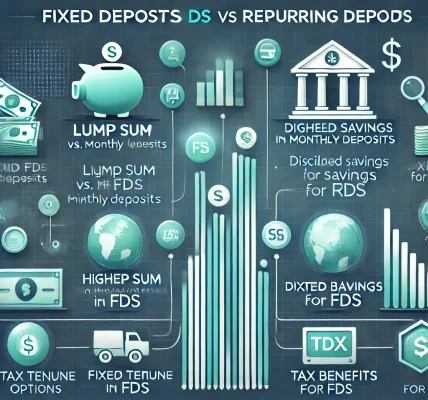Introduction In an increasingly globalized world, individuals are looking beyond their home countries for better financial growth opportunities. Saving plans, whether national or international, play a crucial role in securing financial stability. But how do they compare? In this blog, we will examine the pros and cons of national and international saving plans to help you make an informed decision.
National Saving Plans
Pros:
- Government-Backed Security – Most national saving plans are backed by the government, making them relatively low-risk.
- Tax Benefits – Many national savings schemes offer tax exemptions or deductions, reducing overall tax liability.
- Easy Accessibility – Local saving plans are easily accessible through banks, post offices, and financial institutions.
- Stable Returns – Due to government regulations, national saving plans often provide stable and predictable returns.
- Local Currency Protection – Investments in national saving plans are typically protected from exchange rate fluctuations.
Cons:
- Limited Interest Rates – Returns on national savings plans may be lower than those of international alternatives.
- Inflation Risks – Inflation can erode the purchasing power of your savings over time.
- Restricted Withdrawal Options – Many national saving schemes have strict withdrawal rules and penalties for early withdrawals.
- Lack of Global Exposure – Investing solely in national plans may not provide diversification against economic downturns.
International Saving Plans
Pros:
- Higher Interest Rates – Some international banks and financial institutions offer better interest rates compared to national savings plans.
- Currency Diversification – Holding savings in multiple currencies can help protect against exchange rate fluctuations.
- Global Investment Opportunities – International saving plans allow investors to access diverse markets and industries.
- Asset Protection – Some foreign savings plans offer protection against domestic financial instability or legal risks.
- Better Retirement Options – Many offshore saving plans offer lucrative pension and retirement benefits that are unavailable in national plans.
Cons:
- Regulatory Complexities – International saving plans may involve complex tax and legal regulations that vary by country.
- Foreign Exchange Risks – Currency depreciation in the country of investment may reduce returns.
- Higher Fees and Charges – Many international savings accounts require higher initial deposits and maintenance fees.
- Limited Government Protection – Unlike national plans, international savings do not always come with government-backed security.
- Accessibility Issues – Some foreign savings accounts may have restrictions on fund withdrawal or require residency in the investment country.
Key Factors to Consider When Choosing a Saving Plan
- Your Financial Goals: Are you saving for retirement, education, or emergency funds? Different plans cater to different needs.
- Risk Appetite: If you prefer a lower risk, national saving plans might be more suitable. For higher returns and diversification, consider international plans.
- Tax Implications: Understand the tax benefits or obligations associated with each saving plan.
- Currency Considerations: If you expect to move or invest abroad, international plans may be a better option.
- Liquidity Needs: Consider how easily you can access your funds when needed.
Conclusion Both national and international saving plans have their merits and drawbacks. While national saving plans offer security and stability, international plans provide higher returns and diversification. The choice depends on your financial goals, risk tolerance, and investment strategy. A well-balanced portfolio that combines both options can offer the best of both worlds, ensuring long-term financial growth and security.




